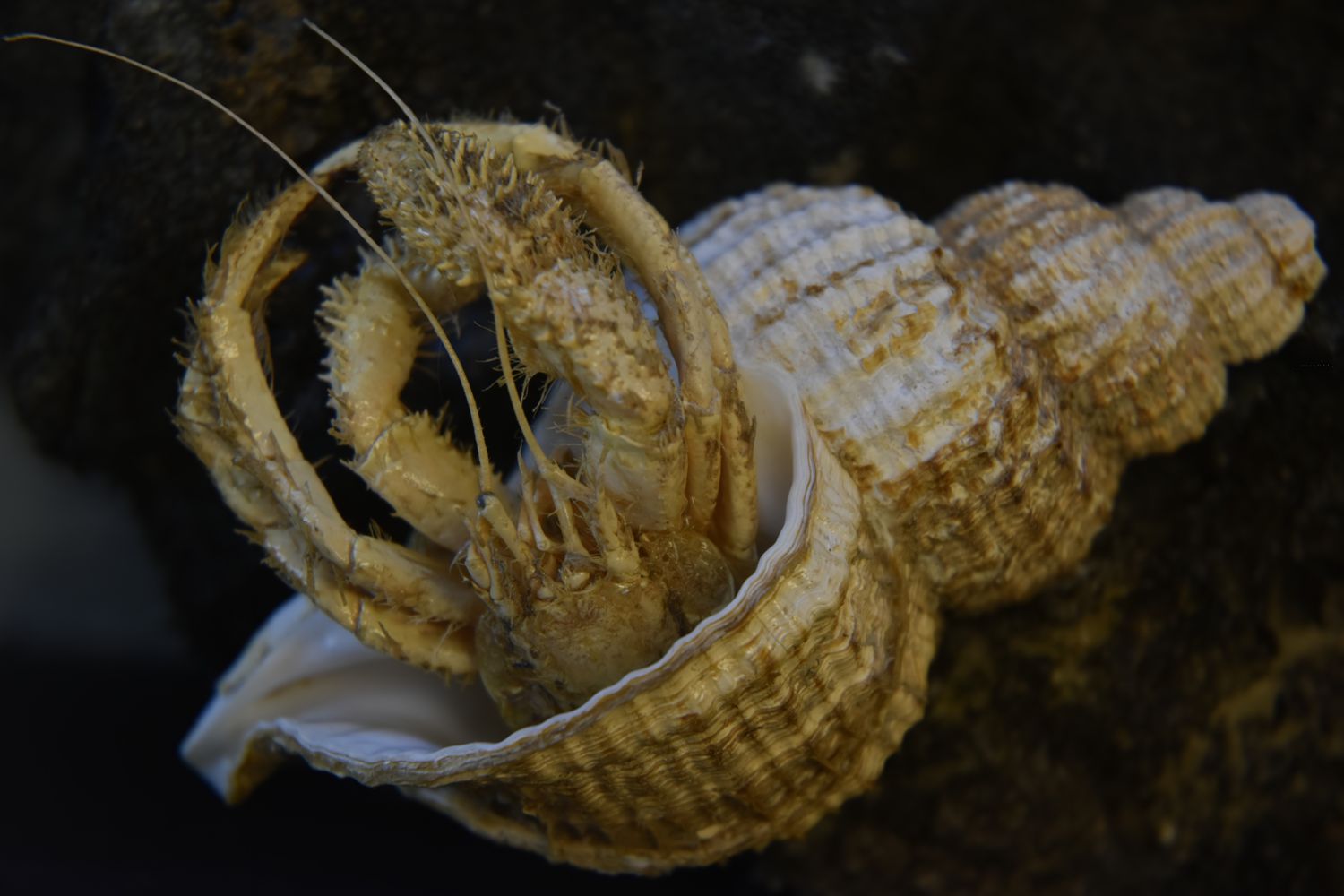Paguristes turgidus (Stimpson, 1857)Common name(s): Orange hairy hermit |
|
| Synonyms: Clibinarius turgidus, Eupagarus turgidus |  |
|
Phylum Arthropoda
Subphylum Crustacea
Class Malacostraca
Subclass Eumalacostraca
Superorder Eucarida
Order Decapoda
Suborder Pleocyemata
Superfamily Paguroidea
|
|
| A dried specimen of Paguristes turgidus, collected in the 1960's near Rosario by Jerry Fink, Ernie Ford, and Calvin Tininenko. The colors are faded in this dried specimen. Length of animal extruded from the Fusitriton oregonensis shell about 5-7 cm. | |
| (Photo by: ) | |
Description: Unlike hermit crabs of family Paguridae, which are far more common here and have a right chela larger than the left, the left and right chelae of members of Family Diogenidae are nearly the same size or the left chela may even be bigger than the right. The bases of the third maxillipeds are also close together, and females have a brood pouch at the base of the 4th pleopod. Paguristes turgidus has an eyestalk only about 1/2 as long as the carapace shield and not many setae on the antennal flagellum. Much of the chelae, including the cutting surfaces of the chela teeth, are blackened (corneous), although the non-cutting parts of the chela teeth are white. The brood pouch of the female is narrow and nearly triangular. The body has many spines and setae. The carapace shield is rust-red and yellow with some areas of dark red and white streaks. The walking legs are reddish-brown with white and cream, plus red or orange dactyls. The brood pouch is white and the eggs are bright red. The base of the antennae is orange with small red spots. The antennal flagellum is white with a dorsal red stripe. Males up to 1.77 and females up to 1.14 cm carapace length.
How to Distinguish from Similar Species: Hermit crab species from genus family Paguridae have the right chela arger than the left. Paguristes ulreyi have eyestalks nearly as long as the carapace shield,the brood pouch is broader and nearly rectangular, there are few dark corneous teeth on the cutting surfaces of the chelae, and the antennae are short and fringed with long hairs.
Geographical Range: Chukchi Sea on the Russian Pacific coast, through Alaska, and down to San Diego
Depth Range: Subtidal, 5 to 465 m
Habitat: Soft bottoms. Often found in heavy silt. Usually moves slowly.
Biology/Natural History: In this
area they often choose hairy triton Fusitriton
oregonensis or moon snail Euspira
lewisii shells.
| Return to: | |||
| Main Page | Alphabetic Index | Systematic Index | Glossary |
References:
Dichotomous Keys:Hart, 1982
Kozloff, 1987, 1996
General References:
Jensen,
2014
Lamb
and Hanby, 2005
Scientific Articles:
Web sites:
General Notes and Observations: Locations, abundances, unusual behaviors:
Although this individual is present in a display of species collected
at Rosario and some references indicate that this species is sometimes
common, I have never found a live one here near Rosario. Perhaps
that is because it is subtidal and specializes in silty bottoms, which
we do not sample much.
Authors and Editors of Page:
Dave Cowles (2016): Created original page
CSS coding for page developed by Jonathan Cowles (2007)
Salish Sea Invertebrates web site provided courtesy of Walla
Walla University